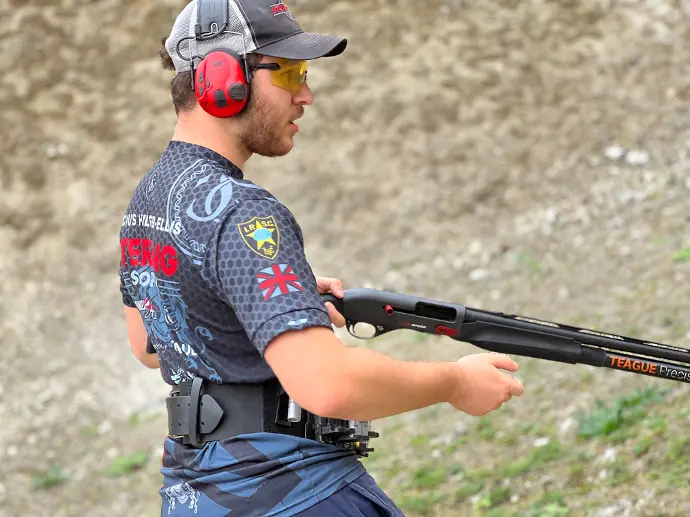Practical Shotgun
Practical shotgun shooting, often referred to simply as 'practical shotgun' or 'practical shotgun sports,' is a competitive dynamic shooting sport that involves using shotguns to engage various targets in a dynamic and practical manner.
Here are some key features and aspects of practical shotgun shooting:
- Courses of Fire: Practical shotgun matches typically involve shooting through a series of stages or courses of fire. These courses are designed to challenge a shooter's skills in terms of speed, accuracy, and decision-making. Stages often feature a variety of targets, including paper targets and steel targets.
- Legal Requirements: Participants in Practical Shotgun competitions must adhere to strict legal requirements governing firearms ownership and use in the UK. This includes obtaining the necessary firearm certificate, adhering to storage regulations, and complying with transportation laws.
- Firearms: Participants use a variety of shotgun types, including pump-action or semi-automatic. The choice of shotgun depends on the shooter's preference and the specific rules of the match.
- Ammunition: Practical shotgun shooters use different types of shotgun ammunition, including birdshot, buckshot, and slugs, depending on the stage's requirements. Birdshot is typically used for engaging static targets, while buckshot and slugs may be used for steel targets or longer-range engagements.
- Scoring: Scoring systems can vary between different practical shotgun organisations and matches, but they typically reward both accuracy and speed. Penalties, such as added time or missed target penalties, may be applied for failing to engage targets correctly or for safety infractions.
- Movement and Positioning: Practical shotgun shooters often need to move through the course of fire, changing positions, reloading on the move, and transitioning between different shotgun loads. This adds dynamic movement to the sport.
- Safety: Safety is a top priority in practical shotgun shooting. Shooters are required to follow strict safety rules and wear appropriate protective gear, including eye and ear protection.
- Divisions: Depending on the organisation and match rules, practical shotgun shooting may have various divisions or categories based on factors such as shotgun type, optic use, or skill level. These divisions allow shooters to compete against others with similar equipment or skill levels.
